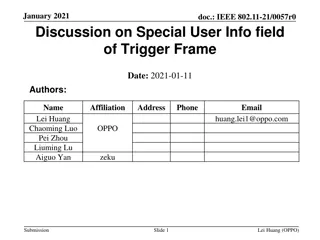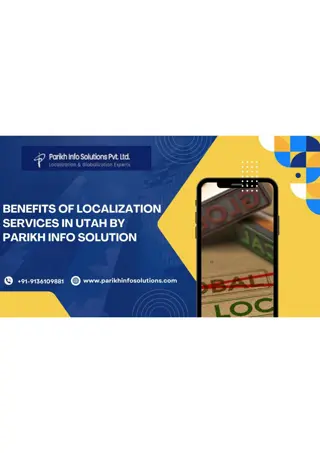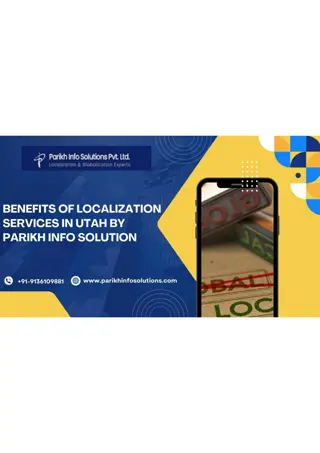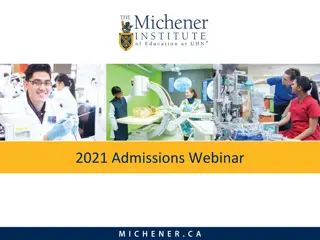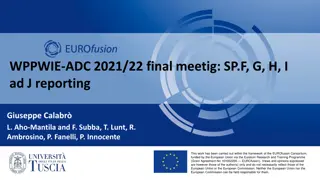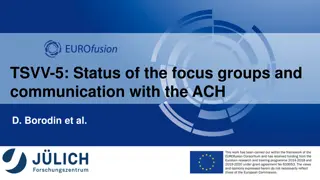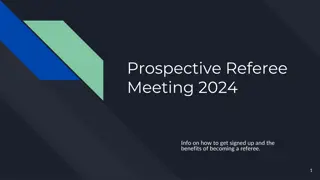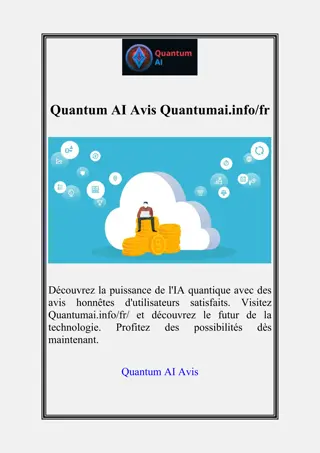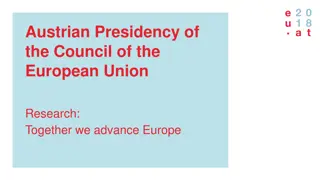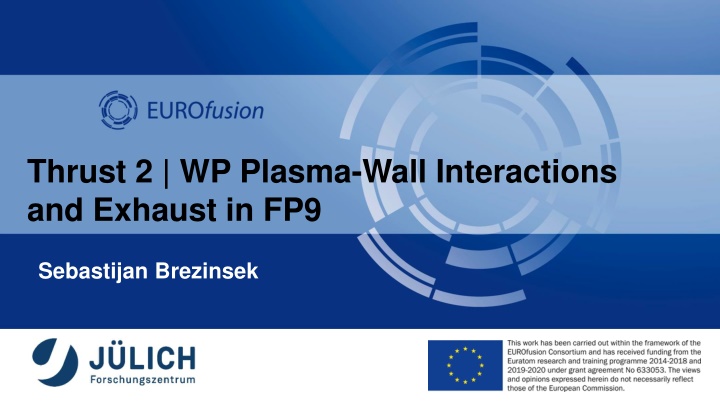
Plasma-Wall Interactions and Exhaust in Fusion Energy Research
Explore the critical aspects of plasma-wall interactions and exhaust in the context of fusion energy research, focusing on topics such as radiative divertor, seeding gases, advanced divertor solutions, and impurity screening. This comprehensive study delves into the role of WP PWIE in the EUROfusion project, highlighting its collaborations with other sub-projects and the management structure. Join the discussion on edge physics and plasma-wall interface facilitated by experts in the field.
Download Presentation

Please find below an Image/Link to download the presentation.
The content on the website is provided AS IS for your information and personal use only. It may not be sold, licensed, or shared on other websites without obtaining consent from the author. If you encounter any issues during the download, it is possible that the publisher has removed the file from their server.
You are allowed to download the files provided on this website for personal or commercial use, subject to the condition that they are used lawfully. All files are the property of their respective owners.
The content on the website is provided AS IS for your information and personal use only. It may not be sold, licensed, or shared on other websites without obtaining consent from the author.
E N D
Presentation Transcript
Thrust 2 | WP Plasma-Wall Interactions and Exhaust in FP9 Sebastijan Brezinsek
Plasma-Wall Interactions & Exhaust Radiative divertor Tungsten + seed gas (Kr/N2) Focus on ITER and DEMO materials, H, isotopes, He, seeding gases, and impurities. Goal on steady-state operation. Particle and heat flux Tungsten + Deuterium Advanced Divertor Solutions Tungsten DEMO AUG MAGNUM [T. Morgan] JET ITER [M. Bernert] [F. Militello] WP PWIE covers laboratory experiments, linear plasma devices, and high heat flux facilities and modelling. [J. Romazanov] [S. Markelj] WP PWIE supports experiments at toroidal devices including W7-X. 3D erosion & deposition modelling Beryllium Fuel (Tritium) retention Tungsten + Deuterium/Helium Sebastijan Brezinsek | TSVV KOM | Zoom | 23.04.2021 | Page 2
WP PWIE role in EUROfusion Works hand in hand with FTD in the area of DEMO PWI, exhaust solutions, and safety Complements WP DIV studies regarding (plasma) qualification of PFCs for DEMO & JT60-SA, DTT, W7-X FTD TSVV TSVV Neutral Gas Dynamics in the Edge WP MAT WP DIV WP DES WP SAE Plasma Exhaust: Fluid/Gyrofluid Edge Codes WP PWIE Impurity Sources, Transport, and Screening Plasma Exhaust: Gyrokinetic/Kinetic Edge Codes WP PrIO WP TE WP W7X WP SA Plasma-Wall Interaction in DEMO THRUST 2 FSD via WP TE and thrust 1! Addresses Mission 2 in FSD in laboratory experiments, linear plasma devices, and toroidal devices Works hand in hand with WP TE (and JET-1) in the areas of PWI and PFC-compatible exhaust solutions Executes post-mortem analysis of PFCs (JET, WEST, AUG etc.) and associated interpretation Sebastijan Brezinsek | TSVV KOM | Zoom | 23.04.2021 | Page 3
Structure of WP PWIE PL: S. Brezinsek DPL: G. Calabro PSO: M. Reinhart CO: D. Douai TSVV links to different subprojects and about 30 Tasks per year Project Managment Plan Available early May for TSVV PIs! Access to linear devices: MAGNUM-PSI, PSI-2, JULE-PSI for benchmark Access to toroidal facilties via WP W7-X and WP TE Sebastijan Brezinsek | TSVV KOM | Zoom | 23.04.2021 | Page 4
Thrust Thrust definition: A Thrust serves as a communication platform among a group of related TSVVs and WPs, on behalf of the entire E-TASC SB. It consists of a set of TSVV leaders, E-TASC SB members, and relevant PLs/TFLs and is coordinated by a facilitator chosen among the latter. The facilitator provides feedback on the Thrust activities and proposes corrective actions for the TSVV work programmes to the E-TASC SB if and when needed. We are building a group to foster the discussion and promote the synergies Thrust 2: Edge Physics & PWI Facilitator:S. Brezinsek Involving: D. Borodin; G. Ciraolo; D. Matveev [TSVV-5, -6, -7] A. Alonso; C. Sozzi; A. Hakola B. Braams, D. Tskhakaya [WPPWIE] [WPW7X, WPSA, WPTE] [ETASC SB] Sebastijan Brezinsek | TSVV KOM | Zoom | 23.04.2021 | Page 5
Edge Physics & Plasma-Wall Interactions THRUST 2 (Strong) Interaction between the different TSVVs and associated codes (selection of best) TSVV Neutral Gas Dynamics in the Edge Links linear plasmas & laboratory experiments with tokamaks & stellarators to benchmark where approrpriate (e.g. detachment) Impurity Sources, Transport, and Screening Plasma-Wall Interaction in DEMO Benchmark cases from toroidal devices? Scheme for ACH interaction? Priorities? Thrust 2: Edge Physics & PWI Facilitator:S. Brezinsek Involving: D. Borodin; G. Ciraolo; D. Matveev [TSVV-5, -6, -7] A. Alonso; C. Sozzi; A. Hakola B. Braams, D. Tskhakaya [WPPWIE] [WPW7X, WPSA, WPTE] [ETASC SB] Sebastijan Brezinsek | TSVV KOM | Zoom | 23.04.2021 | Page 6
TSVV-5: Neutral Gas Dynamics in the Edge FP-9 deliverables: Main simulation tool: EIRENE code (and EIRENE-CFD packages) http://www.eirene.de/ 1. 1. Neutral gas code that allows for an efficient use of HPC resources (towards exascale systems and/or HPC booster techniques) through suitable parallelization methods. methods. Neutral gas code that allows for an efficient use of HPC resources (towards exascale systems and/or HPC booster techniques) through suitable parallelization We aim to transform it to IM- and HPC-ready neutral gas module (EIRENE-NGM) suitable for simulations on ITER and DEMO scale with large focus on (semi)detached divertor plasmas 2. 2. Revised and extended physics basis for the neutral gas model. Further development of the underlying collision-radiative model towards the full vibrational resolution for all hydrogen isotopes and specific impurities for seeding. vibrational resolution for all hydrogen isotopes and specific impurities for seeding. Revised and extended physics basis for the neutral gas model. Further development of the underlying collision-radiative model towards the full 3. 3. Improved (in contents and structure) Atomic and Molecular database for volumetric and surface processes. Database access through generalized interfaces to, e.g., atomic, molecular, nuclear and surface (AMNS) physics data. to, e.g., atomic, molecular, nuclear and surface (AMNS) physics data. Improved (in contents and structure) Atomic and Molecular database for volumetric and surface processes. Database access through generalized interfaces 4. 4. Interfaces and boundary conditions necessary for future applications; modularization of the neutral gas code to facilitate coupling to computation fluid dynamics (CFD) codes (2D or 3D codes, turbulence codes, time-dependent) and possibly also to gyro-kinetic/gyrofluid plasma codes. possibly also to gyro-kinetic/gyrofluid plasma codes. Interfaces and boundary conditions necessary for future applications; modularization of the neutral gas code to facilitate coupling to computation fluid dynamics (CFD) codes (2D or 3D codes, turbulence codes, time-dependent) and 5. 5. Strategy towards a validated predictive capability for integrated fusion reactor modelling for (semi-)detached divertor plasmas. Liaison with TSVV Tasks 3 and 4. modelling for (semi-)detached divertor plasmas. Liaison with TSVV Tasks 3 and 4. Strategy towards a validated predictive capability for integrated fusion reactor
Sebastijan Brezinsek | Annual Meeting JET-2 / PFC | Zoom | 10.11.2020 | Page 8









